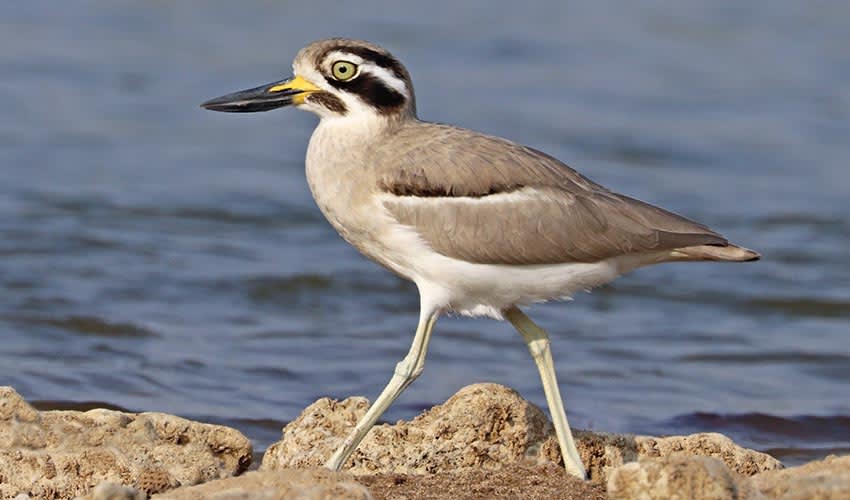Burhinidae – Stone-curlews (Thick-knees)
Members of this family have an extraordinarily girthy legs giving them a unusual appearance
The Burhinidae family, commonly known as stone-curlews or thick-knees, is a group of wading birds known for their cryptic plumage and nocturnal habits. They are found in a variety of open habitats across the world, ranging from semi-desert to grasslands and agricultural fields. However, they are absent from polar regions and many oceanic islands.
These birds are characterized by their long legs, which are well adapted for walking and running over uneven terrain. The three short, thick toes are an adaptation for their terrestrial lifestyle, providing stability as they navigate through their habitats. Stone curlews have a unique pointed and sharp bill that is strong and often slightly curved upwards, which is effective for capturing a variety of prey, including insects, crustaceans, and small reptiles.
The body of a stone-curlew is large and hefty, with a spherical head set on a slender, waisted neck, which gives them a distinctive profile. Their tails are long and, when closed, taper to a point that often tilts slightly downwards. This body shape is particularly suited to their ground-dwelling life and their ability to burst into rapid flight when alarmed.
Stone curlews are noted for their bold plumage patterns, which include large, round eyes that are well adapted for their nocturnal activities. The eyes have a pale base, and the head typically features a combination of stripes that provide excellent camouflage during the day. These head stripes may be noticeable from a distance, but up close, the piercing gaze of the large eye is the most striking feature. The iris of the stone curlew can shrink dramatically in bright light, becoming a bright yellow or amber disc, but at night, the pupil opens wide to capture as much light as possible.
The birds’ cryptic coloration is not just for predator avoidance but also for their hunting strategy. During the day, they can remain motionless, blending into their surroundings to avoid detection. At night, they become more active, using their excellent vision to locate prey.
Genera in this family
It seems like they wear long yellow boots complimenting their common name, i.e., thick-knee
The crab-cracking night watchmen of the beach



